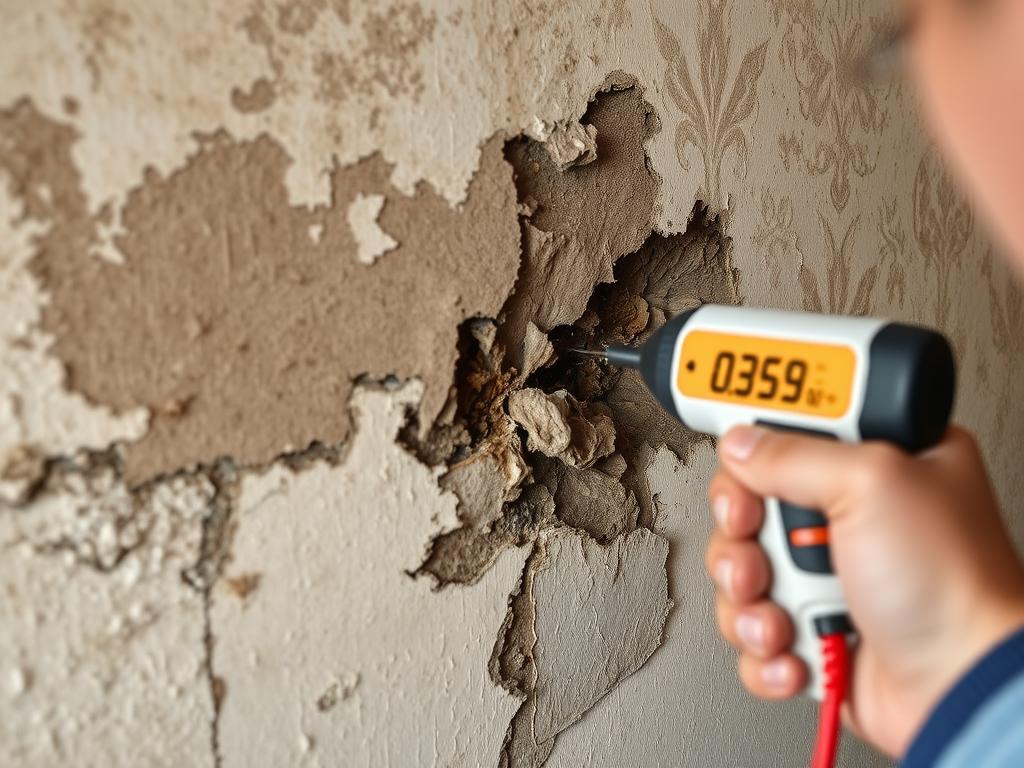Considering buying an older property, a building with unusual construction, or planning major renovations? A Level 3 House Survey provides the most comprehensive assessment of a property’s condition, helping you make informed decisions and potentially saving you thousands in unexpected repair costs. This guide explains everything you need to know about RICS Level 3 Building Surveys, when you need one, and how to use the results effectively.

What Is a Level 3 House Survey?
A Level 3 House Survey, formerly known as a Building Survey, is the most detailed and comprehensive property survey available. It’s conducted by qualified RICS (Royal Institution of Chartered Surveyors) professionals and provides an in-depth analysis of a property’s condition, construction, and any defects that may require attention.
This extensive survey includes a thorough visual inspection of all accessible parts of the property, including the roof space, basement, and outbuildings. The surveyor will check the building’s structure, materials used, and services (such as plumbing, heating, and electrical systems).

Unlike less comprehensive surveys, a Level 3 House Survey will not only identify problems but also provide advice on repairs, maintenance, and potential costs. It’s particularly valuable for older properties (especially those built before 1850), buildings with unusual construction methods, properties that have been extensively altered, or those in visibly poor condition.
Not Sure Which Survey You Need?
Our expert surveyors can help you determine the right level of survey for your property.
Understanding Survey Levels: Level 1 vs Level 2 vs Level 3
The RICS offers three levels of home surveys, each providing different depths of inspection and reporting. Understanding these differences is crucial to selecting the right survey for your needs.
| Feature | Level 1 Survey | Level 2 Survey | Level 3 Survey |
| Descriptive name | Condition Report | HomeBuyer Report | Building Survey |
| Depth of inspection | Basic visual inspection | Intermediate inspection | Comprehensive inspection |
| Property suitability | Modern, standard properties | Conventional properties in reasonable condition | Older, unusual, or altered properties |
| Includes advice on repairs | No | Yes (limited) | Yes (detailed) |
| Includes cost estimates | No | No | Yes (as add-on) |
| Checks hidden areas | No | Limited | Yes (where accessible) |
| Typical cost range | £500-£600 | £600-£1,000 | £700-£2,500+ |
The Level 3 House Survey stands out for its thoroughness and is particularly valuable when purchasing properties that present higher risks or when planning significant renovations. While it’s the most expensive option, the detailed information it provides can save you from costly surprises after purchase.

When Do You Need a Level 3 House Survey?
A Level 3 House Survey is particularly recommended in the following situations:
Property Age & Construction
- Properties built before 1850
- Buildings with unusual construction methods
- Listed buildings or those in conservation areas
- Properties with thatched roofs or timber frames
Property Condition & Plans
- Visibly poor condition or neglected properties
- Properties that have undergone significant alterations
- When planning major renovation works
- When you have specific concerns about structural issues

If you’re uncertain whether a Level 3 Survey is necessary for your property, consulting with a qualified surveyor can help you make the right decision based on your specific circumstances and the property in question.
The Level 3 House Survey Process: What to Expect
Understanding what happens during a Level 3 House Survey helps you prepare and make the most of this valuable service. Here’s a step-by-step breakdown of the typical process:

- Booking the survey – Contact a RICS-accredited surveyor and provide details about the property. They’ll confirm if a Level 3 Survey is appropriate and arrange a convenient date.
- Pre-survey preparation – The surveyor will review available property information and may ask you about specific concerns you have about the property.
- On-site inspection – The surveyor will spend 3-8 hours (depending on property size) conducting a thorough inspection of all accessible areas, including roof spaces, basements, and outbuildings.
- Service testing – While not conducting full tests, the surveyor will observe services like heating, plumbing, and electrics in normal operation where safe to do so.
- Report preparation – Following the inspection, the surveyor will compile a detailed report, typically 30-50 pages long, documenting their findings.
- Report delivery – You’ll receive the comprehensive report within 5-7 working days, often with a follow-up call to discuss the findings.
- Post-survey consultation – Many surveyors offer the opportunity to discuss the report and answer any questions you might have about their findings.

The entire process from booking to receiving your report typically takes 1-2 weeks, though this can vary depending on the surveyor’s availability and the complexity of the property.
Ready to Book Your Level 3 Survey?
Our RICS-accredited surveyors provide thorough Level 3 House Surveys across the UK.
Level 3 House Survey Costs Across the UK
The cost of a Level 3 House Survey varies depending on several factors, including property size, value, location, and complexity. Here’s a breakdown of typical costs across different UK regions:
| Region | Average Cost Range | Factors Affecting Cost |
| London & South East | £800-£1,500+ | Higher property values, premium for London-based surveyors |
| South West | £700-£1,300 | Many period properties requiring specialist knowledge |
| Midlands | £650-£1,200 | Mix of property types, competitive surveyor market |
| North of England | £600-£1,100 | Generally lower property values, more competitive pricing |
| Scotland | £700-£1,300 | Different property system, often includes Home Report |
| Wales | £650-£1,200 | Many rural properties requiring travel time |
| Northern Ireland | £600-£1,100 | Smaller market, fewer specialist surveyors |

While a Level 3 House Survey represents a significant investment, it’s important to consider the potential cost savings. Identifying serious defects before purchase can provide leverage for price negotiations or help you avoid properties with expensive hidden problems.
Benefits and Potential Drawbacks of a Level 3 House Survey
Benefits
- Most comprehensive property assessment available
- Detailed advice on repairs and maintenance
- Cost estimates for necessary work
- Identifies hidden defects in accessible areas
- Provides negotiating leverage if issues are found
- Peace of mind for high-risk or unusual properties
- Tailored advice for listed buildings or period properties
Potential Drawbacks
- Higher cost than Level 1 or Level 2 surveys
- Longer waiting times for report completion
- May be unnecessarily detailed for modern, standard properties
- Cannot detect issues behind walls or under floors
- Recommendations may require further specialist investigations
- Detailed reports can sometimes overwhelm buyers

For most older or unusual properties, the benefits of a Level 3 House Survey far outweigh the drawbacks. The detailed information provided can save you from making a costly mistake or help you budget accurately for necessary repairs after purchase.
Top 5 Red Flags Found in Level 3 House Surveys
Level 3 House Surveys frequently uncover serious issues that might not be apparent during a casual viewing. Here are the most common significant problems identified:

- Structural movement – Cracks in walls, sloping floors, or doors that won’t close properly can indicate subsidence, settlement, or other structural issues that may require expensive underpinning or other remedial work.
- Damp and timber issues – Rising damp, penetrating damp, condensation problems, and associated timber defects like wet rot, dry rot, or woodworm can be extensive in older properties and costly to remedy.
- Roof defects – Damaged roof coverings, deteriorated roof structures, or inadequate support can lead to water ingress and significant damage if not addressed promptly.
- Outdated electrical systems – Old wiring that doesn’t meet current regulations presents both safety hazards and the need for complete rewiring, which is disruptive and expensive.
- Drainage and plumbing problems – Leaking pipes, damaged drains, or outdated plumbing systems can cause extensive damage and may require significant work to bring up to modern standards.

A Level 3 House Survey doesn’t just identify these problems—it explains their severity, likely causes, and provides guidance on remedial actions and potential costs, helping you make an informed decision about your property purchase.
Concerned About Property Defects?
Our detailed Level 3 House Survey can identify potential issues before you commit to purchase.
Frequently Asked Questions About Level 3 House Surveys
Can I negotiate the house price after a Level 3 Survey?
Yes, the findings of a Level 3 House Survey often provide strong grounds for price negotiation. If significant defects are identified, you can request a price reduction to cover the cost of necessary repairs. Alternatively, you might ask the seller to fix the issues before completion. Having detailed information about repair costs from your survey strengthens your negotiating position.
How long does a Level 3 House Survey take to complete?
The on-site inspection typically takes 4-8 hours, depending on the size and complexity of the property. After the inspection, you can expect to receive your report within 5-7 working days. The entire process from booking to receiving your report usually takes 1-2 weeks, though this can vary based on surveyor availability and property complexity.
Is a Level 3 Survey worth the extra cost compared to a Level 2?
For older properties (pre-1850), buildings with unusual construction, or properties in visibly poor condition, a Level 3 Survey is definitely worth the additional investment. The detailed information about defects, repair advice, and cost estimates can save you from expensive surprises after purchase. For newer, standard construction properties in good condition, a Level 2 Survey may be sufficient.
What’s not included in a Level 3 House Survey?
While comprehensive, a Level 3 Survey has limitations. It doesn’t include testing of services (though they’re observed in operation), inspection of inaccessible areas, or assessment of parts hidden behind furniture or stored items. The survey doesn’t include a valuation unless specifically requested. Additionally, surveyors can’t guarantee to find all defects, particularly those that are concealed or require specialist equipment to detect.
Can I attend the survey with the surveyor?
Most surveyors prefer to conduct the inspection alone to focus fully on the property assessment. However, many offer the option to meet at the property toward the end of the survey to discuss initial findings. Alternatively, they may offer a follow-up phone call or meeting to go through the report. It’s best to discuss your preferences when booking the survey.

Making the Most of Your Level 3 House Survey
A Level 3 House Survey is a valuable investment when purchasing older, unusual, or potentially problematic properties. The detailed information it provides helps you make informed decisions, budget accurately for future maintenance, and potentially negotiate a better purchase price.
To maximize the value of your survey:
- Share any specific concerns with your surveyor before the inspection
- Take advantage of the opportunity to discuss the findings with your surveyor
- Use the report to obtain quotes from specialists for any necessary work
- Consider the survey findings in the context of your long-term plans for the property
- Keep the report as a reference for future maintenance planning

Remember that while a Level 3 House Survey represents a significant upfront cost, it can save you thousands in the long run by identifying serious defects before you commit to purchase. For older or unusual properties, it’s an essential step in the buying process that provides valuable peace of mind.
Ready to Proceed with Confidence?
Book your comprehensive Level 3 House Survey today and make your property purchase with complete peace of mind.

